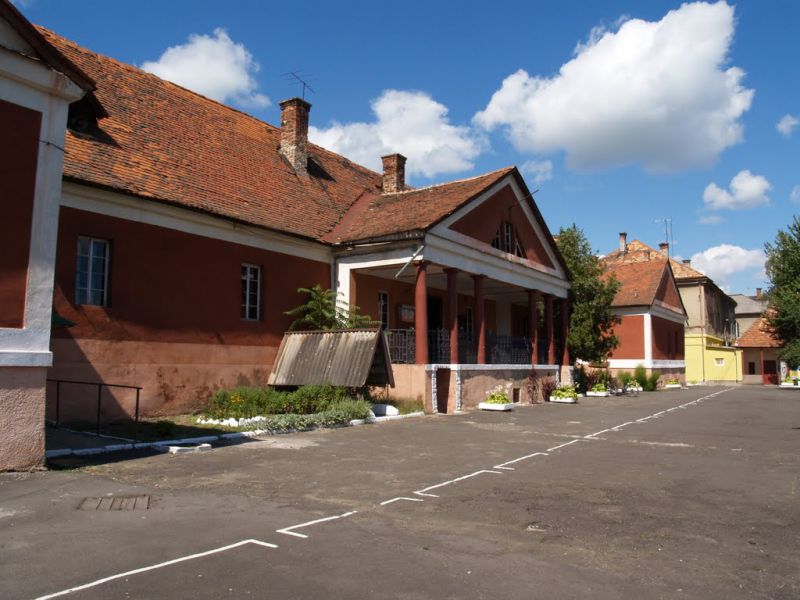The town of Berehove (from the Hungarian Beregszasz - Берегсас) is located at the foot of low mountains, the slopes of which are planted with vineyards. The Werke River flows through the city, which is also called a canal because it connects Borjava and Latorica. The famous Reformed church writer Pope Paris Ferenc (1649-1716) wrote in his book "Dictionarium latino-hungaricum" that before the arrival of the Hungarians, there was a Roman settlement here under the name Perigium, but it was not possible to scientifically confirm this assumption.
There are two legends about the appearance of a settlement on the site of modern Berehovoy. Behind the first, the shepherd Sas, watching the fight of two bulls, saw that they had knocked out a hole with their hooves where the treasure was. With these funds, the construction of a temple on the bank of the river began, and the new settlement near it was named Beregsas. Another version, more plausible, attributes the honor of founding the settlement in 1063 to Duke Lampert, the youngest son of the Hungarian king Beyla. This estate for a time bore the name of the founder - Villa Lamperti or Lampertgaz. In 1141, King Geise II moved the Saxons ("Saxons") from over the Rhine to the city, which suffered from constant raids by the Polovtsy. From that time it was called Lampertsas. It was the Saxons who supposedly started the culture of grape growing in the region, and also began to mine gold in Muzhievo. In 1247, King Bale IV granted the settlement the status of a royal city, and in 1342 it received Magdeburg law. In 1446, the first shoemaker's workshop in Transcarpathia was established in the city. Starting from 1504, the city was called Beregsas in documents, as it became the administrative center of the Bereg county in 1271 (before that, the village of Beregy was the center).
The city played a major role in the anti-Habsburg war of liberation of Prince Ferenc II Rakocza. On May 22, 1703, in the central square of Beregsas, Tomas Ese unfurled the flag of rebellion. In 1880, Beregsas suffered from a severe fire - most of the houses burned down. It was only thanks to the family of Dr. Linner, who took large loans from banks against the collateral of their vineyards, that the town was rebuilt and acquired the appearance it can be seen today.
During 1919-1938, the city was a part of Czechoslovakia, at which time it first received its Slavonic name "Berehove".
Modern Berehove (although locals still call it Beregsas) deserves a full-day walk. Here you can explore architectural and historical sights, taste wine and try Hungarian cuisine in one of the many restaurants or cafes.
Local thermal springs of silicon-nitrogen-carbon dioxide-chloride-sodium waters of high mineralization are also popular. Analogues are found in Kamchatka, Sakhalin, Iceland and New Zealand. The temperature of the water in the beach pool never drops below 36 degrees, and the mineral water comes from a well 1,680 m deep. This water has a good effect on the health of people with cardiovascular diseases, varicose veins, arthritis, osteochondrosis, and diseases of the nervous system. Helps to heal from the consequences of injuries to bone tissue, muscles and tendons. The water is white, opaque, salty to the taste.
The thermal pool in Berehove is included in the program of many tourist routes in Transcarpathia. What to do in Berehove? Bathe in a thermal pool, walk the streets of the city, taste Hungarian cuisine, taste wines in ancient wine cellars. From Berehove, you can go on an excursion to Mukachevo, Uzhgorod, Koson. In the nearby village of Kidesh (the dynasties of winemakers live here), you will be offered more than 33 varieties of white, red, and rose wines. These are dry, semi-dry and dessert wines. Prices are moderate. There is also a tasting room in the cellars of the village of Velyki Berehy.
Thermal springs of Berehove are hot waters, underground silicon-nitrogen-carbon dioxide-chloride-sodium high mineralization. Thermal waters in Berehove are indicated in the treatment of diseases of the cardiovascular and nervous systems, osteochondrosis, muscle and tendon injuries, varicose veins, arthritis. Local Hungarian flavor, architecture, good service in hotels, delicious cuisine and low prices in Berehove restaurants make the city attractive in the eyes of tourists.
Many festivals are held in Berehove throughout the year. During the most popular events, it is quite difficult to find free accommodation. If the vacation is planned during such festivals as "Bereg Fest", you should take care of booking in advance.
Rest in Berehove: leisure
This ancient city is more than 7 centuries old. There are many sights that fans of history, architecture, and culture can spend time exploring. The most popular objects are:
- Count's court with the museum of the Berehove region

- Kubovych and Meigesh palaces
- church of the reformers, etc.

Many tourists are attracted by wine-making facilities, the main one of which is the wine cellar owned by the Shosh family. The "Zolota Pava" restaurant is considered a favorite place of rest for citizens and guests. Here you can have a great time, taste hearty, aromatic masterpieces of Hungarian cuisine.




